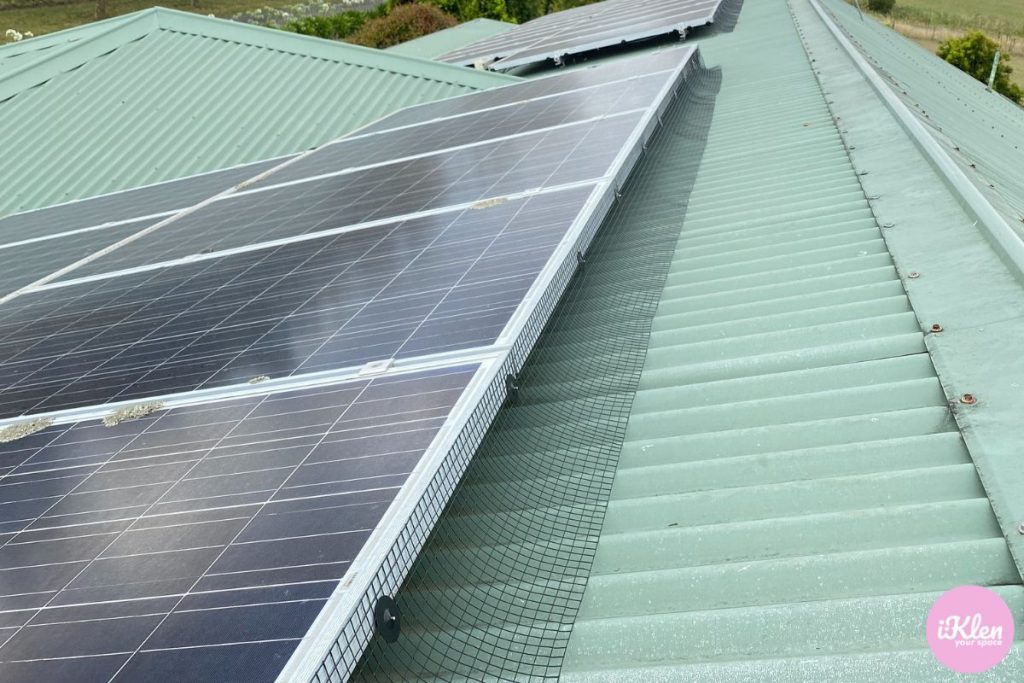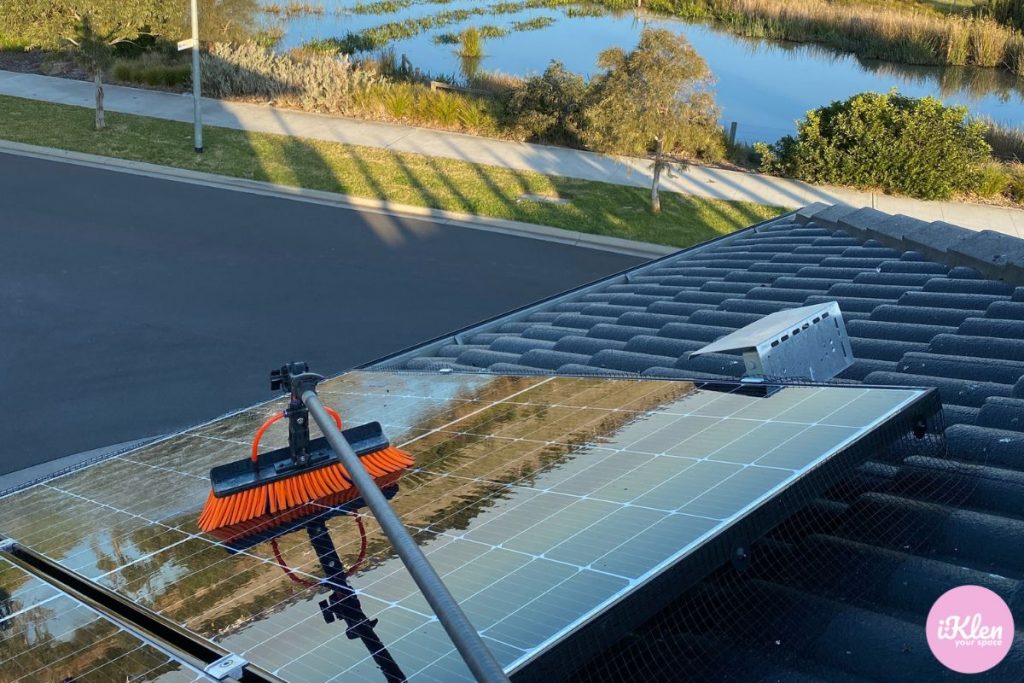
Do you have green build up growing on your solar panels? This is usually Lichen and it will cause issues for your solar system soon if not it has already begun to! Let us show you in this guide the necessary steps to take to remove lichen from your solar panels to maintain your system.
What is Lichen?
Lichen on solar panels refers to the growth of a symbiotic organism composed of a fungus and algae or cyanobacteria on the surface of the solar panel. Lichen is a unique composite organism where the fungus and the photosynthetic partner (algae or cyanobacteria) live together in a mutually beneficial relationship. The fungus provides a protective structure for the algae or cyanobacteria, and in return, the photosynthetic partner produces energy through photosynthesis, which benefits both organisms.
How Does Lichen/Algae Affect Your Solar Panels?
The growth of Lichen on solar panels can be problematic because it can block sunlight from reaching the solar cells, reducing the efficiency of the panels. Additionally, the growth can trap moisture and debris, potentially leading to long-term damage to the panels or affecting their performance.
There are variations in appearance of Lichen, often presenting as small, flat, greenish patches on the surface of the panels. They can be found in a range of environments and are known for their ability to survive in harsh conditions, including extreme temperatures and limited water availability.
To ensure the optimal performance of solar panels, it’s important to monitor and manage any lichen growth. Regular maintenance and cleaning can help prevent the buildup of lichen and other debris that might hinder the panels’ efficiency.
Lichen growth on solar panels can reduce their efficiency by blocking sunlight and potentially causing long-term damage to the panels. Removing lichen requires careful attention to avoid damaging the panels.
Here’s a step-by-step guide on how to remove lichen/Algae from solar panels:
Materials You’ll Need:
- Soft-bristle brush or a microfiber cloth
- Warm water
- Mild soap or detergent (dish soap works well)
- Isopropyl alcohol (optional)
- Rubber gloves
- Safety glasses (optional)
- Ladder or scaffolding (if needed)
- Soft, non-abrasive sponge
- Plastic scraper (optional)
Safety Precautions:
- Before starting, make sure to turn off the solar panels to avoid electrical hazards.
- Wear rubber gloves and safety glasses to protect yourself.

Steps to Remove Lichen/Algae:
- Assessment: Check the severity of the lichen growth. If it’s a minor buildup, you might be able to clean the panels without the need for strong chemicals.
- Gentle Brushing: Use a soft-bristle brush or a microfiber cloth to gently brush off loose lichen. Be very careful not to scratch or damage the surface of the panels.
- Soap Solution: Mix warm water with a mild soap or detergent to create a soapy solution. Dip the soft sponge into the solution and wring out excess liquid. However, You want the sponge to be damp but not dripping.
- Gentle Cleaning: Gently rub the damp sponge over the lichen-covered areas. Do not apply excessive pressure to avoid scratching the panels. Start from the top and work your way down.
- Rinsing: Use a separate clean sponge or cloth dampened with plain water to rinse off the soap residue. Make sure no soap is left behind as it can affect solar panel performance.
- Isopropyl Alcohol (Optional): If lichen residue persists, you can moisten a cloth with isopropyl alcohol and gently rub the affected areas. Hence, alcohol can help break down tougher residues, but be cautious as it can potentially damage certain panel coatings.
- Plastic Scraper (Optional): If the lichen is stubborn and won’t come off with gentle cleaning, you can use a plastic scraper to carefully lift it away. Make sure the scraper is non-abrasive to avoid scratches.
- Final Rinse: Once the lichen is removed, rinse the panels again with clean water to ensure all cleaning agents are removed.
- Drying: Allow the panels to air dry. Lastly, make sure they are completely dry before turning them back on to avoid electrical hazards.
Risks To Cleaning Lichen off solar panels yourself:
Lichen removal and cleaning your solar panels at home it poses several potential risks. In the case there is large build up of Lichen this may be a strenuous task which can be dangerous when on a roof for long periods of time. If you are inexperienced with working on a roof, it is recommended to seek professional help as there are safety regulations and procedures in place. Additionally, cleaning the panels with the incorrect equipment of products can result in the panels being damaged or reduce cell productivity hindering your solar panel efficiency. Any issues that arise due to damage may not be covered by warranty.
Best Way to remove Lichen/Algae and Maintain Clean Solar Panels
Remember that cleaning solar panels too frequently or using abrasive materials can harm the protective coatings and reduce the panels’ efficiency over time. If the lichen growth is extensive or you’re uncomfortable cleaning the panels yourself, consult a professional solar panel maintenance service.
They have the expertise and equipment to clean the panels safely and effectively. If you are in need for professional help in Melbourne contact iKlen to assist in safely removing the lichen and keeping your solar panels in pristine condition.
